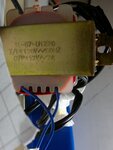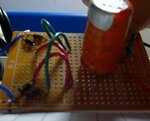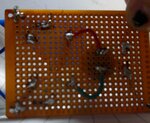luiggipf
Newbie level 5
I tried to make a simple power supply with some components that I had lying around, and it just began to make some weird noises, that ended up burning two of the diodes that made up the full-wave rectifier ( using the 4 diodes ).
I do not have much experience yet so I could have done some obvious mistake, that I hope that I could find out here at this forum.
The images show how I set everything up and the specifications of it all.
I do not have much experience yet so I could have done some obvious mistake, that I hope that I could find out here at this forum.
The images show how I set everything up and the specifications of it all.












